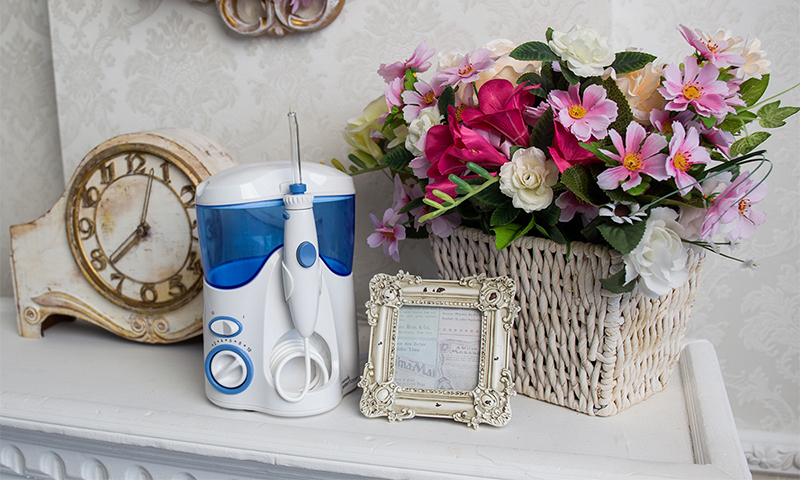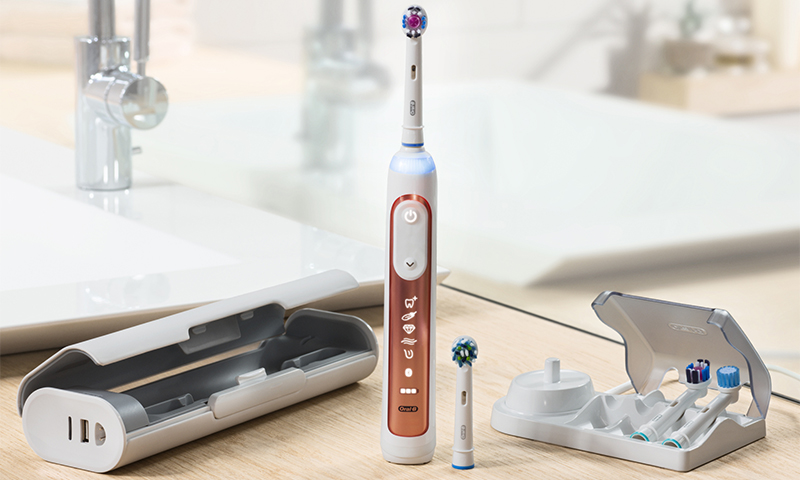High-quality oral care can prevent the formation of tartar, bleeding, caries and other dental diseases. Therefore, the choice of means for cleaning the teeth and gums should be approached with full responsibility. Among the goods for oral hygiene, electric toothbrushes have gained immense popularity, which not only do all the work for their owner, but also provide high-quality removal of plaque even in hard-to-reach areas. The devices are presented in a huge range and it is quite difficult to choose the best option. To make you decide on the purchase, we have collected the key characteristics of electric toothbrushes, which affect the operation of the device and ease of use.

Content:
The best manufacturers of electric toothbrushes - which company to choose
When choosing an electric toothbrush, first of all, you should decide on the manufacturer of the product. Preference is better to give to reputable companies that have proven themselves on the positive side.
These companies include:
- Oral-B;
- Braun;
- SoWash.
Brands value their reputation, so they produce goods of the highest quality. Many dentists recommend products from these companies for effective daily oral hygiene, as electric toothbrushes do the work for their user and minimize the chance of poor-quality cleaning.
To find out which models of electric toothbrushes occupy a leading position among the hygienic products for the care of the oral cavity, read our ranking best electric toothbrushes.
Principle of operation and device
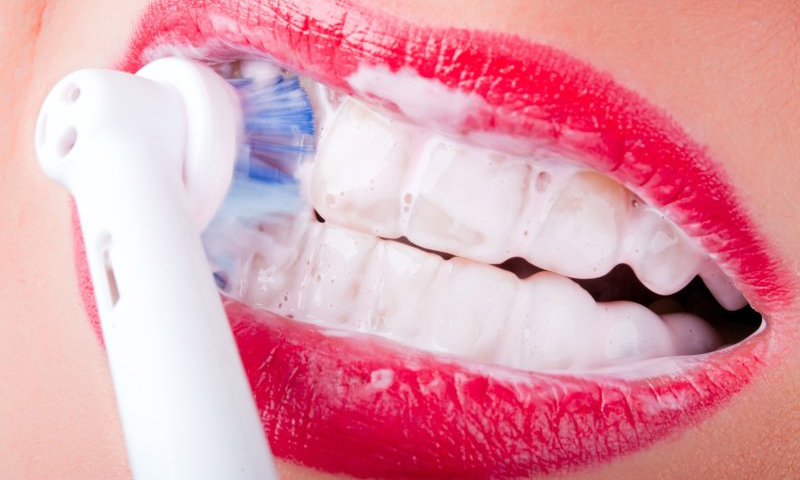
Electric toothbrush (EZSCH) - a modern device for cleaning teeth. Removal of plaque occurs due to frequent vibration of the bristles, movements can be reciprocating, rotating and vibrating (up and down).
The design of the device includes:
1. brush head, which is easy to change, so a few people can use an electromechanical handle, while having their own brush attachment;
2. head stem holder;
3. the handle, which is equipped with a motor, an electronic control unit and a power source.
Electric toothbrushes are battery or battery powered. Therefore, each device is supplied with a charger on which it is installed for charging. Charging has a plug under a standard outlet. Some brushes work on the network, they are less popular because they limit mobility.
The effectiveness of an electric toothbrush (compared to a conventional one) is as follows:
1. The electric brush reduces the time of dental hygiene by almost 2 times, while it is easy to control the duration of the procedure, as many models are equipped with a special timer, which after 2 minutes signals the end of the recommended cleaning time;
2. Based on the results of research, an electric toothbrush provides more efficient oral hygiene, including in hard-to-reach areas;
3. It is not necessary to exert effort to remove plaque, which is an undoubted advantage for people with limited mobility, fractures, and muscle atrophy.
4. Electric toothbrushes have a wide range of accessories.
Types of Electric Toothbrushes
Standard

For this type, devices with a round rotating head, which can move in different modes, are characteristic. Depending on the specific model, the rotational speed in such brushes ranges from 2,000 to 30,000 movements per minute. The devices are great for use by children or people with sensitive teeth.
Advantages:
- most affordable;
- provide soft cleaning;
- do not destroy the attachment of orthodontic structures.
Disadvantages:
- inferior in sound and ultrasound.
Sonic
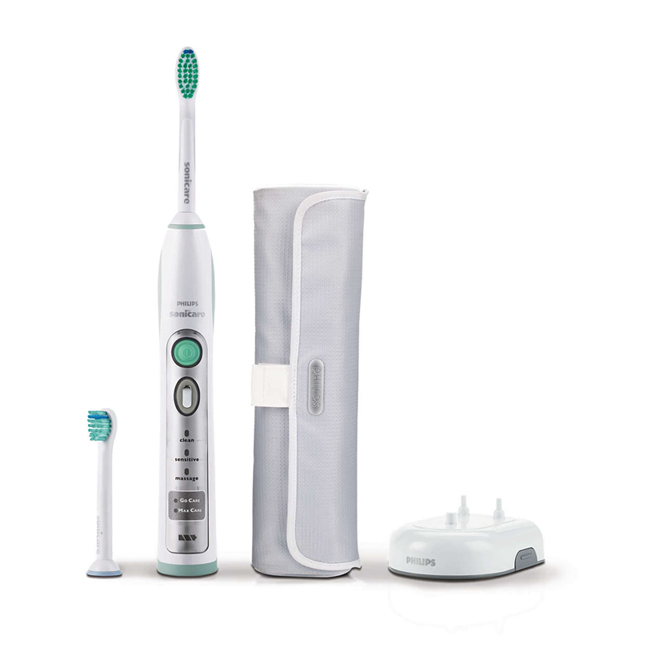
Instruments include all toothbrushes, the vibration of which is audible to humans. Such devices clean the oral cavity due to a special technology: a special membrane generates sound waves and their vibrations are transmitted along the villi of the brush.
Due to the oscillatory movements of a certain amplitude and frequency, the brush ensures the formation of a uniform consistency of foam from paste, water and air, which contributes to the careful and effective removal of plaque even in hard-to-reach areas.
Advantages:
- the use of such brushes does not harm the fixing of veneers, braces, fillings;
- low cost;
- double cleansing of the tooth surface: with the brush and sound itself;
- thorough massage of the gums, improvement of microcirculation of blood, prevention of bleeding;
- mild cleansing without trauma to the enamel;
- in the presence of several individual baits, one family can use one EZSCH.
Disadvantages:
- If used improperly, the device may adversely affect the enamel.
Ultrasound

This particular kind of electric toothbrush. Their principle of operation is similar to the work of sound brushes. The main difference is the high frequency of rotations, which removes even tartar. If sonic brushes "sweep" the remnants of food, then ultrasonic, due to vibrations, destroy plaque on the teeth and protect the gums from the negative influence of pathogenic bacteria.
Ultrasonic brushes work with an electric motor that converts electrical energy into high frequency ultrasonic waves. The latter extend to 5 mm from the setae.
The device can produce 96 million or 192 million pulsations per minute. Due to this effect, the device effectively removes pigment and mineralized plaque, as well as pollution in hard-to-reach areas, where a simple brush makes several movements.
During cleansing, a person may feel warm. The tooth tissue is heated, which is rather a positive thing, since an increase in temperature accelerates blood circulation in the gums.
Advantages:
- economical consumption of toothpaste;
- minimum of effort - for cleaning it is enough to bring the brush to your teeth and wait until the device does its job;
- the highest frequency of vibrations and, as a result, the excellent quality of brushing;
- effectively removes pigment plaque.
Disadvantages:
- high rotational speed may cause a seal to fall out;
- brushes are not recommended for people wearing veneers, crowns or other artificial structures, because under the influence of high rotational speeds, the latter may break;
- contraindicated for people who underwent oncological surgery in the oral cavity or periodontal surgery, with tooth mobility of 3 degrees, with hypertrophic gingivitis, stomatitis, children under 3 years old, with pathological abrasion and low enamel density, with gum inflammation.
Electric toothbrush selection options
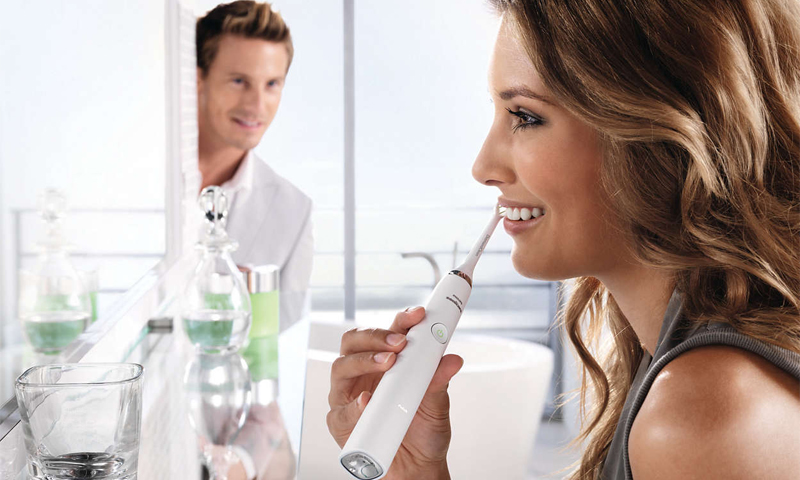
Type of electric toothbrush
When choosing a brush for this parameter, you must first decide what intensity of cleaning is necessary and, starting from preferences and indications for use, choose the appropriate type.
Cleaning modes
The device can have several cleaning modes: reciprocating and vibrating (up-down). In addition, the device can perform gum massage, whitening, cleaning sensitive teeth, tongue.
Work speed
The speed of standard and sonic brushes is up to 30,000 pulsations per minute, ultrasonic - 96 million or 192 million per minute.
Brush Head Shape
The surface of the brush should be rounded, it reduces the likelihood of injury to the oral mucosa. It is desirable that the back side was made of a rough material that will allow you to clean the mucosa from microorganisms.
The size
The brush head can have a size from 18 to 35 mm. Children are advised to purchase a brush, the head of which does not exceed 22 mm, for adults - 25-27 mm.
Rigidity
An electric toothbrush may have soft bristles and bristles of medium hardness.
1. Soft are suitable for children or people with sensitive teeth.
2. For other cases, the best option are brushes of medium hardness.
Bristle material
The most popular material that is used to make bristles is synthetic pile, which is notable for its smoothness, lack of pores, long service life, and low cost.
There are brushes with natural bristles, they are suitable for allergy sufferers, but they have significant drawbacks: a short lifespan, they are difficult to find on the market, costly, they are a breeding ground for bacteria, too soft, so they clean less.
Brush handle
To prevent the brush from slipping in your hand while brushing your teeth, it is recommended to purchase electric toothbrushes with rubberized inserts on the handle.
Nozzles
You should pay attention to the fact that the brush had a removable head, if the nozzle is spoiled, then it will be enough to replace it with another one, and not to buy a new one.
Additional functions
Electric toothbrushes can have extended functionality:
1. Pressure sensors that signal a strong pressure of the brush on the tooth enamel and prevent its erasure and gum trauma.
2. A timer that helps control the cleaning duration;
3. Wear indicator, which notifies of the need to replace the brush head;
4. Backlight.
Power type
For all electric toothbrushes to work, you need a power supply that batteries or rechargeable batteries can provide. The latter provide a longer work brush.
Weight
The optimal weight of an electric toothbrush - 100-200 g. Brushes that weigh more will be inconvenient to use.
What kind of electric toothbrush to choose
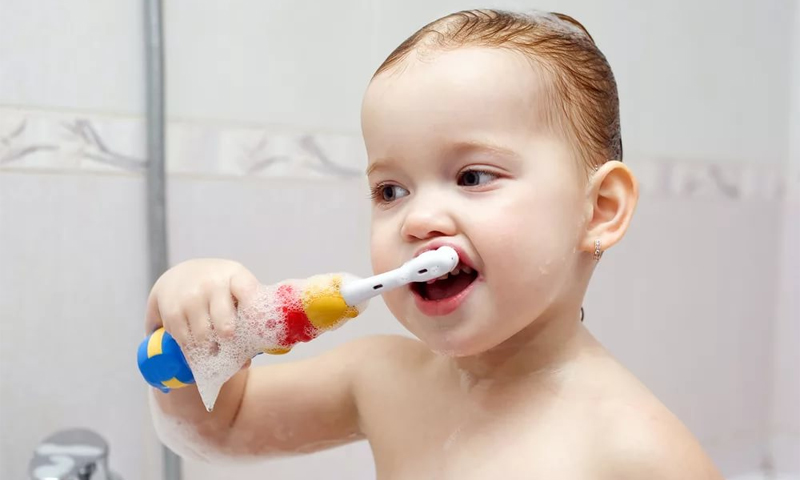
1. Standard and sonic brushes are recommended for people who have fillings, veneers or crowns, because in ultrasonic devices the oscillating wave has a high frequency that spreads deep into the tooth and causes their microvibration, which leads to the destruction of the binder. If the teeth are healthy, there are no problems with the gums, then an ultrasonic toothbrush will be suitable for use.
2. For a softer brushing, it is better to purchase a device with reciprocating movements. Vibrating technology is more powerful, you should get used to it, it is suitable for more intensive cleaning.
3. Choosing a brush for the child, it is better to give preference to devices with a rotation speed of no more than 18,000 per minute, so the device will not put additional strain on the loose enamel.
4. With increased tooth sensitivity, it is better to purchase a brush with soft bristles, so when cleaning the device will not hurt the hard tissues of the tooth. If there are no problems with enamel, then a brush with medium hardness will do.
5. It is better to purchase a device with synthetic bristles. It will last a long time, besides it is not a breeding ground for the reproduction of pathogenic microorganisms and is relatively inexpensive. In case of individual intolerance to synthetic materials, it is better to purchase a brush with natural bristles.
6. If the brush is used by one person, then 1-2 attachments complete with the device are sufficient, if the whole family, then it is necessary to purchase an appliance with an appropriate number of attachments.
How much does an electric toothbrush cost

1. Standard electric toothbrushes with a minimum number of nozzles and several modes of operation are within 850-5000 p.
2. Sound electric toothbrushes are in the range of 1200-11000 p.
3. Ultrasonic electric toothbrushes: 2000-15000 p.
It will be interesting to friends too


